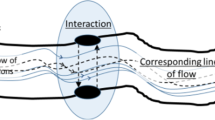Abstract
Citizen participation is a valuable resource in redefining and democratizing urban space. In urban regeneration projects, it fosters engagement by the community and integration among different forms of city urbanization, such as formal and informal areas, i.e. slums. Despite the potentialities of participatory processes, usually the plurality of actors involved challenges in the development of projects. From this perspective, one of the most critical issues is the articulation of their actions in terms of time. Actually, the difference in background, role and motivation between the participating actors can result in temporal misfits that hinder the implementation of actions. Thus, this paper explores the temporal dimension of community-based participatory design projects. Through action research, undertaken in a Brazilian context, we found out three different types of temporal misfits that can occur in this kind of project. Reflecting on them using concepts from project management and participatory design theory, we identified four contextual time factors that have to be considered to deal with timing challenges and to strengthen this practice.






Similar content being viewed by others
References
Alsayyad, N. (2004) Urban informality as a ‘new’ way of life. In: A. Roy and N. Alsayyad (eds.) Urban Informality: Transnational Perspectives from the Middle East, Latin America, and South Asia. Oxford: Lexington Books, pp. 9–32.
Anderson, B. (1991) Imagined Communities: Reflections on the Origin and Spread of Nationalism. New York: Verso.
Brandão, C.R. (2005) Participatory research and participation in research. A look between times and spaces from Latin America. International Journal of Action Research 1(1): 43–68.
Cunha, M.P.E. (2009). The organizing of rhythm, the rhythm of organizing. In: R.A. Roe, M.J. Waller and S.R. Clegg (eds.) Time in Organizational Research. London: Routledge, pp. 220–237.
de Andrade Silva, H., Morais, M.C. and Rubenilson, T.B. (2009) Planejamento urbano e participação popular: uma experiência de ensino e extensão no Bairro Ponta Negra, Natal/RN. Risco: Revista de Pesquisa em Arquitetura e Urbanismo 9: 110–123.
Dille, T. and Söderlund J. (2011) Managing inter-institutional projects: The significance of isochronism, timing norms and temporal misfits. International Journal of Project Management 29: 480–490.
Disalvo, C., Clement, A. and Pipek, V. (2013) Communities: participatory design for, with and by communities. In: J. Simonsen and T. Robertson (eds.) Routledge International Handbook of Participatory Design. New York: Routledge, pp. 182–209.
Emilson, A., Seravalli, A. and Hillgreen, P-A. (2011) Dealing with dilemmas: Participatory approaches in design for social innovation. Swedish Design Research Journal 1: 23–29.
Goldberg, A. (1996) The birds have nested: Design direction for informal settlements. Urban Design International 1: 3–15.
Hussain, S., Sanders, E. B.-N. and Steinert, M. (2012) Participatory design with marginalized people in developing countries: Challenges and opportunities experienced in a field study in Cambodia. International Journal of Design 6(2): 91–109.
Karasti, H., Baker, K.S. and Millerand, F. (2010) Infrastructure time: Long-term matters in collaborative development. Computer Supported Cooperative Work 19(3–4): 377–415.
Krohwinkel-Karlsson, A. (2008) The soft time constraint: Studies of project extension within an aid agency. PhD Thesis, Stockholm School of Economics, Institute of International Business, Stockholm.
Labianca, G., Moon, H. and Watt, I. (2005) When is an hour not 60 minutes? Deadlines, temporal schemata, and individual and task group performance. Academy of Management Journal 48(4): 677–694.
Light, A. and Akama, Y. (2012) The Human Touch: participatory practice and the role of facilitation in designing with communities. In: Proceedings of the 12th Participatory Design Conference, 12–16 August, Roskilde, Denmark. Roskilde: ACM Press, pp. 61–70.
O’Kelly, M. (2007) Negociação urbana, arte e a produção do espaço público. Risco: Revista de Pesquisa em Arquitetura e Urbanismo 5: 113–127.
Observatório de favelas. (2009) O que é favela, afinal? In: J. Souza e Silva (org.) O que é favela, afinal? Rio de Janeiro: Observatório de Favelas do Rio de Janeiro, pp. 21–23.
Park, S. (2014) The social dimension of urban design as a means of engendering community engagement in urban regeneration. Urban Design International 19: 177–185.
Pérez-Nordtvedt, L., Tyge Payne, G., Short, J.C. and Kedia, B.L. (2008). An entrainment-based model of temporal organizational fit, misfit, and performance. Organization Science 19(5): 785–801.
Sanoff, H. (2007) Editorial. Special issue on participatory design. Design Studies 28: 213–215.
Söderlund, J. (2002) Managing complex development projects: Arenas, knowledge processes and time. R&D Management 32(5): 419–430.
Souza e Silva, J. (2004) A cultura da esperança. Observatório de Favelas, 10 May http://observatoriodefavelas.org.br/wp-content/uploads/2013/06/A-cultura-da-esperanc%CC%A7a_Por-Jailson-de-Souza-e-Silva.pdf, accessed 23 November 2014.
Souza e Silva, J. (2011) Favelas: As formas de ver definem as formas de intervir, Revista Econômica 13(1): 47–57.
Thiollent, M. (1985) Metodologia da Pesquisa-Ação. São Paulo: Cortez.
Acknowledgments
The author Chiara Del Gaudio would like to thank CAPES, the funding research agency of the Brazilian Ministry of Education, for the PNPD/CAPES scholarship, a scholarship that is part of the CAPES Postdoctoral National Program.
Author information
Authors and Affiliations
Corresponding author
Rights and permissions
About this article
Cite this article
Del Gaudio, C., Franzato, C. & de Oliveira, A.J. The challenge of time in community-based participatory design. Urban Des Int 22, 113–126 (2017). https://doi.org/10.1057/s41289-016-0017-5
Published:
Issue Date:
DOI: https://doi.org/10.1057/s41289-016-0017-5




